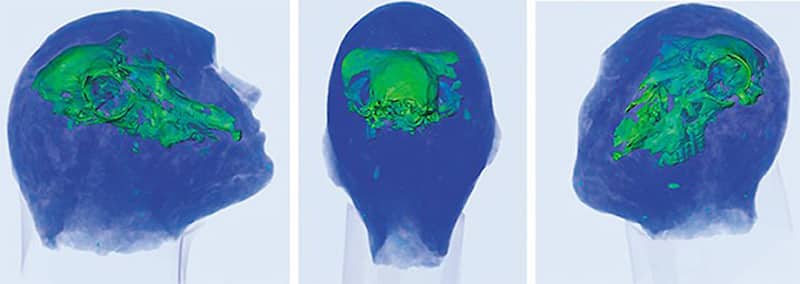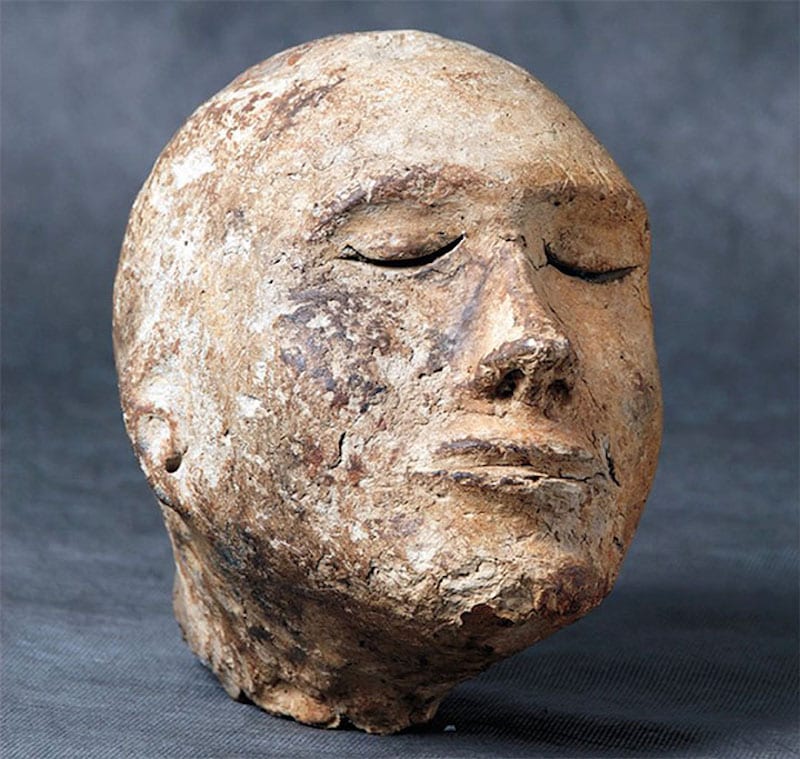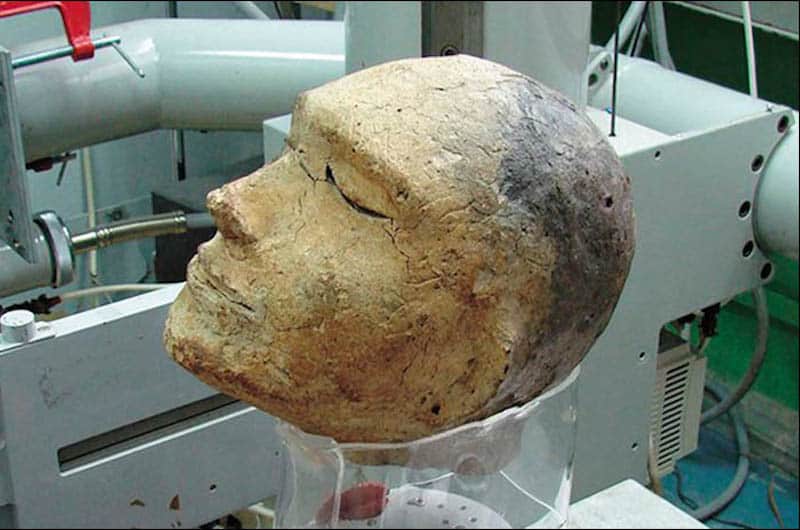The X-ray technology of the period showed that there was an interesting situation in the bones inside the head from this clay, but could not be elaborated further.
In the Shestakovsky Tumulus number 6, the discovery of a skull made of clay compared to a young man has long been of interest for archaeologists.
This mask, first unearthed by Professor Anatoly Matynov in 1968, was compared to the face of a handsome warrior, and was easily chosen among other buried people.

(18,000 Years Old Frozen Dog Found in Siberia)
The X-ray technology of the period showed that there was an interesting situation in the bones inside the head from this clay, but could not be elaborated further.
Martynov stated in 1971 that there was a smaller space inside the clay head that did not match the inner size of the bones and the human skull. Opening and examining the skull at that time was impossible, since the risk of the work’s fragmentation could not be taken into account.
While it was thought to be a human skull, it was surprising scientists to come across a ram head
About 40 years after the discovery, scientists decided to re-examine this mysterious skull of the Tagar culture, known for its interesting and sophisticated funeral rituals, such as the incarnation of 200 incarnate bodies in a single burial pit.
Dr. According to Elga Vadetskaya, the heads of the dead were covered with clay, then the clay was given a face appearance, and the clay, which was likened to the face, was then covered with plaster.
Therefore, the expectation was that the bones in the clay head, which could not be understood by the technology of the period, belonged to a human.
However, the results did not show this.

Research, Archeology and Ethnography Institute. It was realized by Konstantin Kuper from Natalya Polosmak and Nuclear Physics Institute.
While it was thought that there was a human skull in it, it was surprising scientists to come across a ram head. As a result of the reviews, there was only one question in mind. Why? What prompted these people to fill a human head with ram remains?
Professor In an article published in the journal Polosmak Science First Hand, he explains that any explanation about the finding, which he stated that he had never seen a similar one while revealing two different reasons, would be as unique as the finding itself.
According to Polosmak, the person buried with such an unusual application is likely to be a man whose body cannot be found. It is possible that the man in question was lost in the taiga, drowned, or did not return to foreign lands.
For this reason, it is said that a copy was made together with the animal whose soul had materialized and sent to the other world. According to scientists, this was the only way to send a person who did not go back and forth to the next world.
It is thought that the clay head may be depicting a person lost in the taiga, drowned, or not going anywhere else.
Archaeologists come across graves called kenotaf, which contain some symbolic objects and values instead of human remains. Symbolic objects in these tombs can often be animal remains.
Another explanation polosmak suggests is that this “false tomb” is a chance to start a new life with a new position.
In this case, instead of the skull of a real person, a ram-shaped human head was used. It is undoubtedly known how important the coach is to ancient people.
So, what does this ram head, hidden under the clay resembling a human face, tell us? Was this done by accident, or was it an animal rather than a human being that matters here?
The ram was one of the most worshiped animals of ancient times, as the Egyptian god Khnum was portrayed as a ram.
A third statement of the incident was the study of the elaborate burial rituals of the Tesinsk period. He came from Vadetskaya. Although Vadetskaya’s work is based on research by other archaeologists, it also includes quite interesting results from forensic experts.
According to Vadetskaya, the burial ritual took place in two stages. The first was to put the lifeless body in a box that they would hold in a shallow grave or under a pile of stones for several years.
The main goal here was partial mummification. Skin and tissues rot, but tendons and spinal cord remained.
Then the skeleton was taken and tied with small branches, the skull was pierced and the rest of the brain was removed.
Then the nostrils, eye cavities and mouth were filled with clay, and the skull was given the shape of the face, avoiding the details. Clay head was often covered with a thin plate of gypsum, drawings and decorations could be made on it.
Head of Tagar culture in the Kamenka III tumulus, painted on plaster.
According to Vadetskaya, the evidence that the plaster has been refurbished and repainted indicates that the process may have been repeatedly performed.
Vadetskaya said, “The waiting time was too long for some mummies. They were only left to rot until the skulls remained. In some cases, it even happened that the skull did not even remain. As such, a copy of the dead was made not only of the head, but of the entire body. The ruins of the ram were used to replace the real human skulls that were lost or torn in decades between two funeral rituals. says.
It is hoped that future scientists will have access to more advanced technology to study this extraordinary finding and uncover its mysteries.

